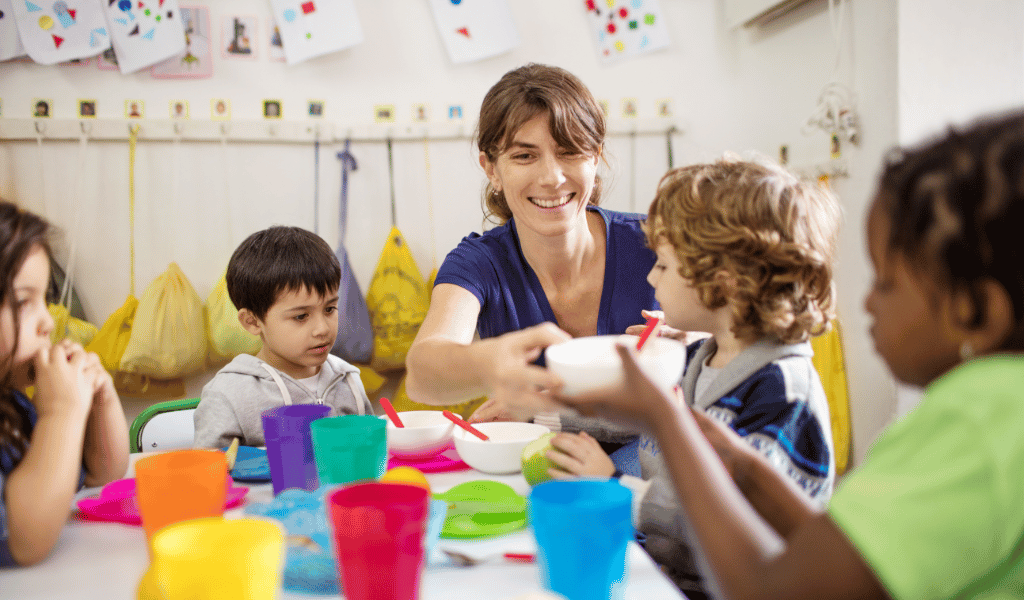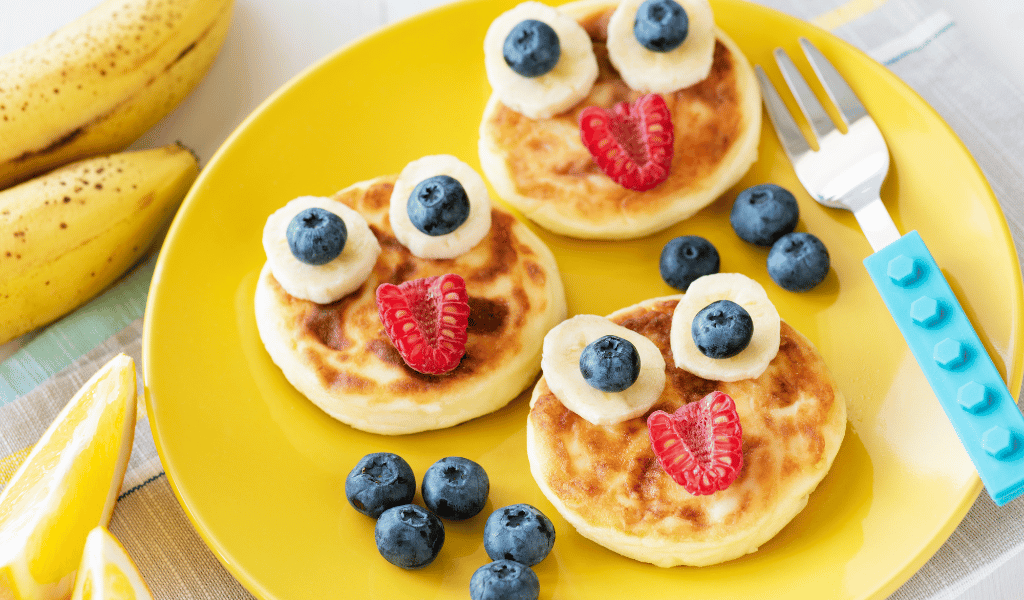“I don’t like it” can be a common phrase when it comes to children and food, sometimes when they haven’t even tried it! It can be frustrating for parents, early years teachers and early years chefs alike.
All children are different, and what works for one child may not work for another. There are numerous techniques to try out during mealtimes. Here are my favourite five that I find most effective:
- Create a complete mealtime experience
Early years settings have the opportunity to form good eating habits from an early age. By creating a “dining room experience” for the children, you can set routines and boundaries, supporting the child’s understanding of where play ends and mealtime begins. Try using low-level chairs and tables for all, even the teachers.
- Engage with the children
Talk to the children as you would talk to friends and family at dinner. Discussing the food is important, but so are real world topics and sharing interests. Adopting a “family-style dining” approach where the children serve themselves and their friends, can teach the children about portion control, making healthy choices and sharing.

- Praise and encouragement
Children can form negative associations with food simply from the language we use particularly when food is used as a reward or punishment. Instead of saying “You didn’t eat all of your cauliflower”, you could say “Well done for trying some of your cauliflower, let’s try it again next week”. This small adjustment to our approach can help to form positive relationships with food. Try to avoid using phrases like “If you don’t eat your meal, you can’t have pudding”. This language can have a negative impact in the long-run as the child now associates the meal as a chore and the pudding as the prize.
- Peer-to-peer role modelling
Ever wonder why a child may love a certain food one week then hate it the next? Sometimes it’s as simple as their friend not liking it so they don’t anymore. Whilst this is perfectly normal behaviour it can make it quite challenging when you have a particularly selective child. Try sitting them next to children who you know are good eaters. The ripple effect of good eating behaviours can work wonders!
- Make food fun!
We eat with our eyes and generally love nothing more than going out to a nice restaurant and seeing our food beautifully presented. Children are no different. They want their food to be colourful and exciting! Follow their interests and combine it in their food. If the children love the ocean this week, can we make their fruit look like fish? If it’s been snowing, can we make little snowmen out of their mash potato? Absolutely.

Another great way to make the food fun is by involving the children in the food-making process. Food-related activities are a fantastic way to engage children with food and heighten their sensory system at the same time.
Remember, forming positive relationships with food is a marathon, not a race! A child may have to try a certain food 7-10 times before they like it. Don’t give up, you’re doing great! Just keep offering as much varied food as you can as now is the time for the children to formulate their own opinion on food and healthy choices.

About the author
Sean Cowden joined LEYF (London Early Years Foundation) in 2022 as the Chef Lecturer for their Early Years Chef Academy courses. In 2019, LEYF established the Early Years Chef Academy to ensure more children are getting the healthy, nutritious food they need to grow and learn, by training chefs to be experts in child nutrition and to help children, staff and parents build healthy habits for life.
Want more expert, early years advice? Stay on top of your practice by signing up to award-winning software, Kinderly Together! Includes our CPD webinar platform too and loads of support!



